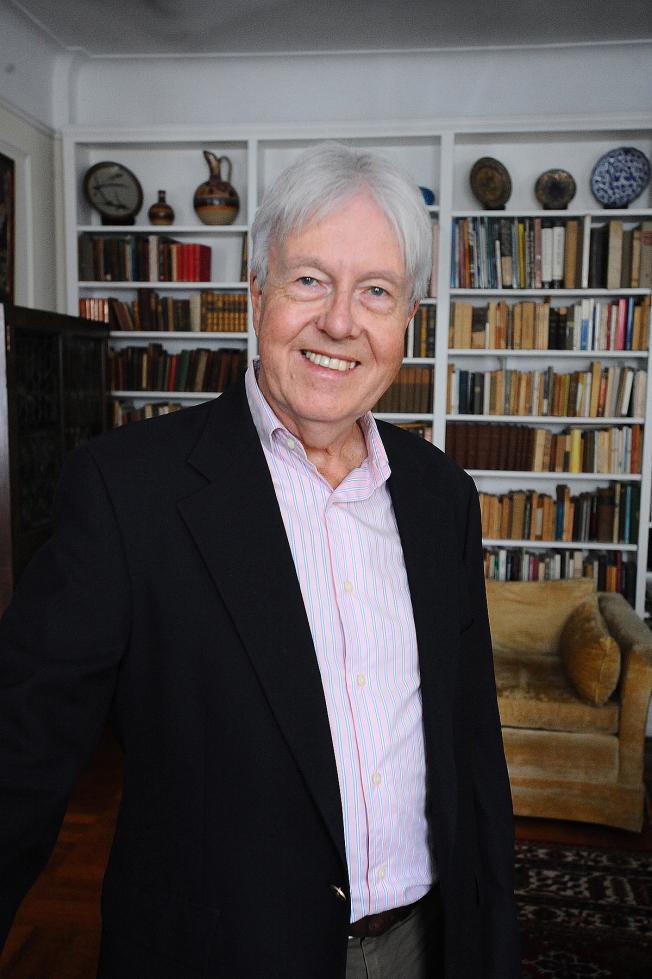Roger Bagnall
February 1, 2021
The papers of Alan Cameron (1938–2017) have been donated to the Rare Book and Manuscript Library of Columbia University.
Cameron was educated at St. Paul’s School (London) and New College, Oxford. After posts in Glasgow and London, along with an unexpectedly exciting year as a visitor at Columbia (1967–1968) that included the student uprising of spring 1968, he served as Anthon Professor of Latin Language and Literature at Columbia from 1977 to 2008.
He was one of the most prominent scholars of the literature and history of the later Roman world as well as a classical philologist, ranging in his interests from Hellenistic poetry to Byzantium. (A detailed biographical notice may be found in Biographical Memoirs of Fellows of the British Academy.)
As Peter Wiseman pointed out in an appreciation of Alan’s work at a memorial event in London in March 2018, one of the hallmarks of Alan’s work was “his wonderfully pungent verdicts on his predecessors’ theories and preconceptions.” Among the examples cited by Wiseman are the following:
The preface to Circus Factions (v) draws attention to Jacques Jarry’s Hérésies et factions, ‘a book whose spectacular marriage of traditional falsehood with original fantasy has put it beyond the reach of ordinary criticism.’
And from Callimachus and His Critics:
… the unquestioned assumption that Callimachus was debating the issue of Homeric imitation, that famous debate about which modern critics have so much to say and ancient sources not a single word.
Some may be surprised, others relieved to discover that there is not a scrap of ancient evidence for this bizarre doctrine.
Wiseman also noted Cameron’s “determination to imagine the human reality of the past. He was always thinking beyond the texts to the real people who were there."
“In Claudian, for instance, he notes that the panegyric on Honorius’ third consulship gives the young emperor credit for Theodosius’ victory at the Frigidus in 394:
He represents the young Emperor burning with desire to accompany his father into battle and hear the longed-for clang of the trumpets and trample the corpses underfoot, ‘quae tibi tunc rabies…’ One hopes the audience managed to keep a straight face.
In Circus Factions, he wonders about the effect of the emperor taking over responsibility:
Someone still had to supervise and instruct the large staff of grooms, starters, sweepers, doctors, workmen, etc., not to mention pick and train the teams, advise and often enough (no doubt) mediate between temperamental drivers, while all the time keeping an eye open for promising new talent. In short, to manage the faction. Who would make a more natural successor to the old entrepreneur/impresario than the senior charioteer of each faction? To put it in modern terms, when the business side became less important, the business manager was succeeded by the player manager.
The collection of his papers includes letters from more than 400 correspondents over a 50-year period, including Andreas Alföldi, Ernst Badian, Jean-Pierre Callu, Henry Chadwick, Andre Chastagnol, E. R. Dodds, Gilbert Highet, A. H. M. Jones, Hugh Lloyd-Jones, Arnaldo Momigliano, Louis Robert, Henri Saffrey, D. R. Shackleton Bailey, Otto Skutsch, Ronald Syme, Hugh Trevor-Roper, and many others. Despite his penchant for polemic, he maintained friendly relationships with many scholars with whom he disagreed, and the range of correspondents is very wide.
The collection also includes unpublished lectures on a range of topics, including “Reading Roman Ivories,” “Rome and Constantinople,” and “Palladas.” There are also research files on topics related to Cameron’s published work. These include a large body of material related to his Porphyrius the Charioteer, including photographs, drawings, and rubbings of the monument. The archive also includes unpublished and unfinished work, including an unfinished monograph on the foundation of Constantinople. All of Alan Cameron’s more than 200 published articles and reviews are also part of the collection.
The papers will be open for use to any interested scholar, although at the moment access is limited by the restrictions necessitated by the pandemic. A detailed index may be found here, and current access information may be found here.

Figure 1. Alan Cameron in his office. Photo courtesy of Roger Bagnall.
Header image: Relief of Porphyrius the Charioteer (Courtesy of Creative Commons)
Authors


